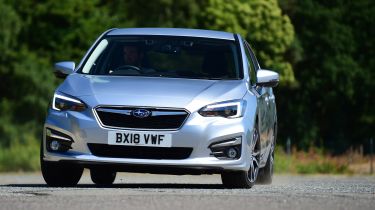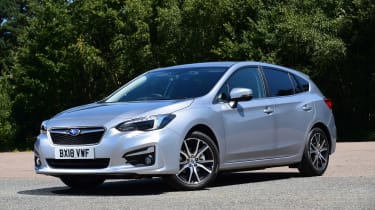Subaru Impreza review - MPG, CO2 and Running Costs
Petrol engines, a CVT transmission and permanent four-wheel drive combine to create a recipe for high running costs
When powered by the 1.6-litre boxer petrol engine, Subaru claims that the Impreza will return 35.9mpg on a combined cycle. This is lower than the original 44.1mpg when tested under the old NEDC method, but the WLTP should be more reflective of what you can expect to achieve in the real world.
Confusingly, the 2.0-litre hasn’t been tested using the WLTP method yet, so the figure of 42.8mpg might be a tad optimistic. Using the 1.6 as a guide, expect economy of around 33mpg to be achiveable.
With permanent four-wheel drive, a CVT transmission and a choice of two petrol engines, the Impreza is hardly geared up to deliver good fuel economy. In fact, if you’re after practicality and efficiency, even the latest compact SUVs might be more suited to your needs.
You also need to factor in the cost of parts and servicing, which tend to be higher than the more mainstream manufacturers, although this should be offset by Subaru’s reputation for reliability and dependability.
With CO2 emissions of 151g/km (WLTP) and 152g/km (NEDC) for the 1.6 and 2.0 models respectively, you’ll pay £140 to tax the Impreza from year two, with a £515 figure for the first year.
Insurance groups
The 1.6-litre Impreza slots into a reasonably low group 12 insurance rating, but with a group 18 rating, the 2.0-litre will cost more to insure. However, all but the entry-level versions of the Audi A3 Sportback with quattro all-wheel drive will be more expensive to insure, while all BMW 1 Series xDrive models slot into groups 23 and 24.
Depreciation
The Impreza is a niche purchase, so finding a second hand example tends to be tougher than it would be with a more mainstream model. The car is also hampered by relatively inefficient petrol engines, the absence of a manual gearbox and a high price tag when new. All of which leads to a steeper depreciation curve, especially during the early years, while a 34 per cent rating for three years/30,000 miles is similar to the Peugeot 308.




